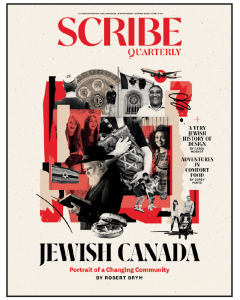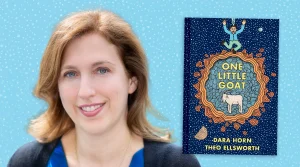The chilling stories ring familiar even to the casual student of the Holocaust: Deportations, beatings, cattle cars, torture, mass shootings, tattooed forearms.
Except these are not Jews speaking, but members of today’s most persecuted ethnic group in Europe.
The Roma, commonly, though not always pejoratively, referred to as Gypsies, even have their own word for it. They may cite the “Holocaust,” as many other non-Jewish survivors do, but their term for their war-era nightmare is “Porrajmos,” meaning “devouring.” It can also mean “rape.”
Once stereotyped as hot-blooded musicians and fortune-tellers, and romanticized as Europe’s noble savages, Europe’s 12-15 million Roma and their subgroups today face brutal discrimination in housing, jobs and education. In many countries, they are ghettoized, denied services, face physical violence and pushed to the margins.
They are then vilified as thieves and vagrants.
During World War II, they were portrayed as less than human, lumped with Jews as parasites worthy of extermination. “Our ashes were mingled in the ovens,” goes one Roma proverb.
How widely known is the Roma experience during the war and today in Europe? Generally, not too much, which is why A People Uncounted is so welcome.
The powerful 100-minute documentary, made by a Canadian – mostly Jewish – crew, premiered in 2012 and has already won a few awards (and has been nominated for a prestigious Producers Guild of America prize). It’s entered in some 35 film festivals in over a dozen countries, including India and China.
It will be screened at Toronto’s Lodzer Synagogue on March 30.
Moody, thorough and hard-hitting, the film travels to eight eastern European countries to record the testimonies of Roma (or Romani) Holocaust survivors. It’s hair-raising stuff, and the filmmakers do not pull their punch. We hear horrific tales of sadistic rape at Auschwitz, a baby and its mother trampled in a cattle car, even of cannibalism. It’s a wonder that only a few subjects break down on camera.
The work is the effort of Toronto filmmakers Tom Rasky and Len Binder, both children of Jewish Holocaust survivors; director Aaron Yeger; and Robi Botos, a Roma musician who fled Hungary to Toronto years ago.
Music, in fact, was a great connector between Roma and Jews in the war era, the film notes. It shows a Roma violinist in Ukraine expertly playing the Yiddish song Mein Shtetele Belz.
Efforts to eradicate the Roma and related groups like the Sinti go back well before the Nazis, apparently to the time of Vlad the Impaler in the 15th century. The film traces the roots of the persecution through the centuries, and its echoes of the Jewish experience are striking.
“One of the biggest things I took away from the process is that there isn’t a fundamental difference between people,” Yeger, 31, said in an interview. As one expert told the filmmakers, though the remark was edited out, the Jews were the outsiders on the inside, while the Roma were the outsiders on the outside.
The two groups “suffered in similar ways, struggled against ethnic nationalism and particularly in some regions, were very close to one another,” Yeger said.
He and a crew spent six weeks on a “road trip” shooting the privately-funded film. We also hear interviews with experts on genocide, including Prof. Frank Chalk, director of the Montreal Institute for Genocide and Human Rights Studies at Concordia University.
It’s difficult to say how many Roma and Sinti perished in the Holocaust. Though the film gives the number as 500,000, The United States Holocaust Memorial Museum says it’s 220,000, while some experts put the figure as high as two million.
Yeger prefers to see the destruction visited on the Roma another way: In some places, 90 per cent of them were wiped out.
Today, the Roma are subject to “what is unfortunately socially acceptable and politically correct racism,” Yeger said. “Politicians and journalists speak about Roma in a way that they would never speak about any other group that I can think of.”
He feels the Roma’s plight is self-fulfilling: “If you reduce people’s access to education, jobs, [and] justice, they fall into poverty, they resort to lifestyles that then reinforce what pushed them to the margins in the first place, and on and on the cycle goes,” said Yeger. “The Roma are still perceived as this permanently itinerant, anti-social group that’s mysterious and chooses to exile themselves from mainstream society, which is absolutely not true.”
One misconception is that they’re nomadic. The vast majority are settled, we are told. And while some of the Roma traditional lifestyle and culture has been preserved, as in Transylvania, for the most part, that part of their identity is gone to history.
Unlike the Jews, the Romani have few resources to address the systemic racism they continue to face. In the city of Kosice, Slovakia, we see they are herded into a squalid ghetto called District 9, and receive water twice a day.
The film, said its director, is “the story of a group of people who are not different from any other people, but are eternally perceived to be radically different. The vast majority in every country just want to live normal productive lives, like anybody else.”






